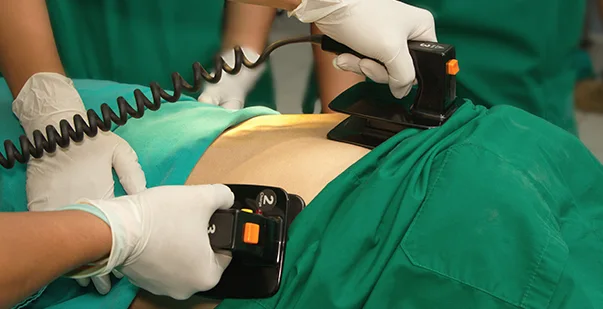
Last Updated on: October 15, 2024
Table of Contents:
Do you know experiencing shokc can cause organ damage, cardiac failure and even respiratory distress? People often associate the term “shock” with intense emotional distress or a sudden fright following a traumatic event. However, in the medical field, shock is defined as an emergency situation where there is inadequate blood flow throughout the body, making it a life-threatening condition.
Various factors can trigger this condition, from excessive bleeding to allergic reactions. Without timely treatment to restore blood flow, victims are at risk of organ failure. In such cases, it administering appropriate treatment of shock with proper first aid training, will help the victims have a higher chance of speedy, full recovery.
Scroll down to explore the signs, types, and first aid procedures for shock in emergencies.
Shock is a medical emergency characterized by a systemic lack of adequate blood flow. When you are in shock, your circulatory system loses its ability to function normally, preventing your body from delivering enough oxygen to tissues and cells. This deprivation leads to organ failure.
Various factors can lead to shock, resulting in a cascade of physiological responses. Each type of shock has its own underlying cause and unique characteristics. Some common types of shock include:
Hypovolemic shock occurs when there is a significant loss of blood or fluids from the body. It can result from traumatic injuries, decreased blood volume, dehydration, or internal hemorrhage. Immediate first aid is crucial for controlling the condition and ensuring adequate blood circulation.
Cardiogenic shock happens when the heart fails to pump blood effectively, often due to heart attacks, heart failure, or severe arrhythmias. Symptoms may include chest pain, a rapid or weak pulse, pale skin, and shortness of breath.
Distributive shock occurs due to the widespread dilation of blood vessels, causing blood to pool in peripheral tissues and reducing overall blood flow. It can result from severe infections (septic shock), allergic reactions (anaphylactic shock), or neurological damage (neurogenic shock).
Prompt recognition of shock symptoms is vital for providing treatment for shock that can stabilize the individual and prevent further complications. Common early symptoms include:
As shock progresses, additional symptoms may include:
If these signs are unnoticed, oxygen levels in the brain will decrease, leading to severe shock symptoms such as:
Treating shock in first aid situations requires immediate action to stabilize the victim and prevent further deterioration of their condition. Here’s a simple step-by-step guide to treating shock effectively in emergencies:
In any emergency, always ensure the safety of both yourself and the victim before taking action. Check the surroundings for potential hazards like fire or unstable structures. Once the area is deemed safe, follow these steps:
If you recognize that the victim needs shock treatment, call emergency services immediately. Provide clear and concise information to the dispatcher, including the location, the number of victims involved, and the nature of their condition.
After informing emergency services, position the victim on their back and elevate their legs unless they have a head, neck, or spinal injury. Avoid elevating the legs if it causes discomfort. Here’s how to properly position for the management of shock.
After positioning the victim, cover them with a blanket or jacket to help maintain their body temperature. Adjust the layers as needed to prevent overheating. The victim’s head and neck should be aligned with the rest of their body to avoid compromising the airway.
Once the victim is warm and comfortable, continuously monitor their signs to assess their condition. For example:
Here’s an overview of the DRSABCD Action Plan to help you respond with confidence and competence in critical situations.
| Parameter | Action |
| D (Danger) | Check for danger and ensure the surroundings are safe for both you and the victim. |
| R (Response) | Check the victim’s responsiveness by seeing if they respond to your voice or physical prompts. |
| S (Send) | Call emergency services to get professional medical assistance. |
| A (Airway) | Open the victim’s mouth and check for any foreign material.
|
| B (Breathing) | Check if the victim is breathing.
|
| C (CPR) | Give the victim 30 chest compressions followed by 2 rescue breaths. Repeat the cycle until help arrives or the victim begins breathing normally. |
| D (Defibrillator) | Use a defibrillator if one is available. Apply it immediately after performing CPR, and follow its prompts for effective use. |
Read More: First Aid for Electric Shock
Familiarizing yourself with the diverse triggers can help you better comprehend the underlying factor that contributes to this critical medical condition. Below are some common causes of shock.
Preventing situations that could lead to shock is essential for maintaining overall well-being. Incorporating the following preventive measures into your daily routine can reduce the likelihood of shock episodes and promote health and safety:
Read More: the Main Objectives and Goals of First Aid Training
Understanding the complexities of shock, an often misunderstood medical condition is vital for everyone. Recognizing the early signs and responding effectively with proper treatment of shock can be life-saving in emergencies. In any suspected case of shock, immediate medical attention is crucial, so always call your local emergency number without delay.
Moreover, equip yourself with the knowledge and skills by enrolling in recognized first aid courses. This will help you stay prepared and confident to make a difference when it matters most. Remember, taking appropriate measures to stabilize the victim, ensuring their comfort, and monitoring their condition can significantly impact their chances of a full recovery.